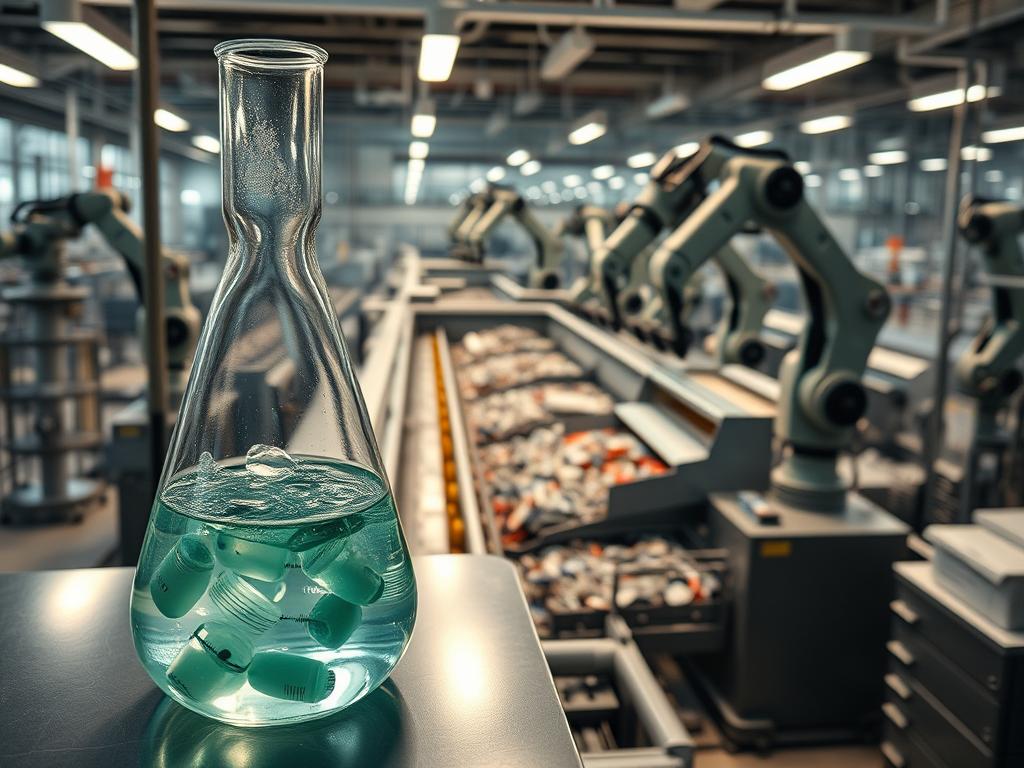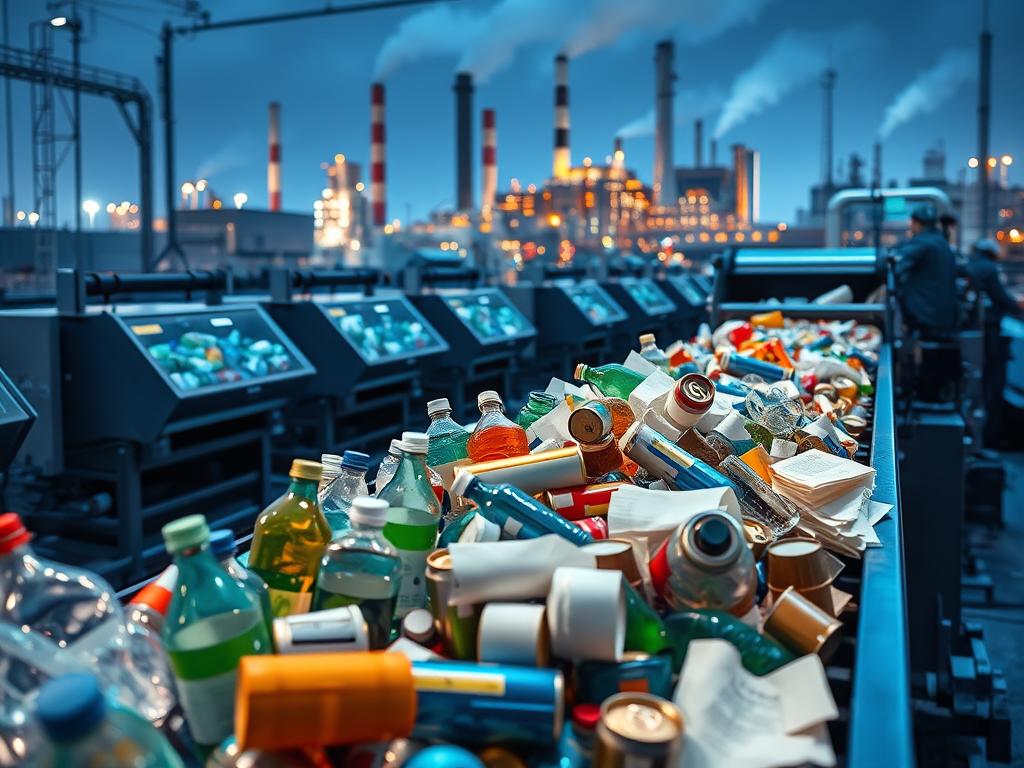Recycling is a crucial scientific process that turns waste into valuable resources. It converts discarded items into new products, reducing environmental impact. This approach helps conserve our planet’s natural resources.
Scientists view recycling as a sophisticated system of complex material transformations. Different materials undergo unique recovery processes. Metals like aluminium show remarkable recyclability.
Recycling efficiency varies across materials. Aluminium cans can be recycled infinitely without losing quality. This process saves 95% of the energy needed for primary production.
Glass and steel also offer extensive recyclability. They can go through repeated material recovery cycles. This helps to conserve resources and reduce waste.
Modern recycling technologies have made significant advances. They enable more precise sorting and processing techniques. Mechanical and chemical methods extract valuable elements from complex waste streams.
Electronic waste recycling has particularly benefited from these advancements. It can now recover precious metals and rare earth elements. This helps reduce the environmental impact of electronic devices.
Understanding recycling science helps us make better waste management decisions. It supports resource conservation efforts. By implementing robust recycling strategies, we can significantly reduce pollution.
These strategies also support sustainable development. They help create a circular economy where waste becomes a resource. This approach is crucial for our planet’s long-term health.
Understanding the Fundamental Concept of Recycling
Recycling is vital for environmental sustainability. It turns waste into valuable resources through material recovery phases. This process creates a circular economy, reducing environmental impact.
The material recovery phases ensure efficient recycling of various materials. These phases involve several key steps:
- Collection: Gathering recyclable materials from residential and commercial sources
- Sorting: Separating different types of recyclable materials
- Processing: Transforming collected materials into reusable resources
- Manufacturing: Creating new products from recycled materials
Types of Recyclable Materials
Different recyclable materials need unique processing techniques. Our research shows the following breakdown:
| Material Type | Recycling Efficiency | Energy Savings |
|---|---|---|
| Aluminum | 95% | 95% energy reduction |
| Steel | 88% | 74% energy reduction |
| Paper | 67% | 64% energy reduction |
| Plastic | 30% | 33% energy reduction |
Environmental Impact Assessment
Recycling’s impact goes beyond waste reduction. It can decrease greenhouse gas emissions and conserve natural resources. Moreover, it reduces the strain on landfill sites.
Recycling is not just about managing waste, but about creating a sustainable future for our planet.
The UN has set ambitious Sustainable Development Goals for waste reduction by 2030. Understanding and implementing effective recycling practices is crucial for global environmental health.
What is the Meaning of Recycle in Science?

The scientific definition of recycling goes beyond simple waste management. It transforms waste into new products or materials. This process can serve original or alternative purposes.
In chemistry, recycling involves complex physical processes. These break down materials to their basic components. Such methods turn discarded resources into valuable raw materials.
“Recycling is not merely disposal, but a complex scientific process of material regeneration.” – Environmental Research Institute
- Chemical transformation of waste materials
- Molecular-level material reconstruction
- Energy-efficient resource recovery
Scientific recycling spans chemistry, physics, and environmental science. Researchers study material properties and molecular structures. This knowledge helps develop new techniques for resource recovery.
Global statistics show the importance of scientific recycling methods. Only 14-18% of plastic waste is recycled worldwide. This highlights the need for advanced material recovery technology.
Research continues to advance recycling science. Scientists explore upcycling and downcycling techniques. These methods aim to maximise resource efficiency and reduce environmental impact.
The Two Primary Categories of Recycling Operations
Recycling is vital for sustainable waste management. It transforms discarded materials into valuable resources. There are two main operational approaches to recycling.
These methods help us conserve resources and reduce waste effectively. Understanding them can improve our environmental conservation strategies.
The two fundamental recycling approaches are internal and external recycling. Each method plays a unique role in resource conservation. They both contribute to waste reduction in different ways.
Internal Recycling Processes
Internal recycling happens within manufacturing environments. Manufacturing facilities reuse waste products generated during their production processes. This method has several key features.
- Reprocessing materials immediately within the same production cycle
- Minimising waste generation at the source
- Reducing raw material consumption
External Recycling Methods
External recycling reclaims materials from end-of-life products. It focuses on collecting, sorting, and reprocessing discarded materials. This approach works with various sources.
- Collecting materials from consumers and businesses
- Separating recyclable components
- Transforming waste into new product streams
Recycling Collection Systems and Methodologies
Effective recycling collection methods are crucial for successful material recovery. Different approaches exist to collect recyclable materials.
- Kerbside collection: Most common plastic packaging recycling method
- Recycling centres: Centralised disposal locations for larger waste items
- Deposit Return Schemes: Incentivised recycling programmes
Modern recycling uses advanced technologies like optical sorting machines and NIR sensors. These tools efficiently identify and separate different material types. They ensure higher-quality recycling outcomes and increased resource recovery rates.
Modern Technologies and Innovation in Recycling
Recycling technologies have seen remarkable changes recently, advancing waste management strategies. The global recycling market could reach $500 billion by 2027. Digital recycling solutions are making waste processing more efficient and sustainable.
Chemical recycling is a groundbreaking approach to material recovery. Global plastic recycling rates are currently around 9%. New technologies could increase recycling rates for hard-to-recycle plastics by up to 80%.
Smart waste management systems lead recycling innovation. Sensor-equipped bins can boost efficiency by monitoring fill levels. This reduces unnecessary truck emissions.
The automated vacuum collection (AVAC) system operates in cities like Bergen, Norway. It shows how technology can improve waste collection across countries.
The future of recycling combines digital solutions with advanced technology. AI-driven sorting systems and blockchain tracking will transform waste management. These innovations are crucial as e-waste could reach 120 million metric tons by 2050.

